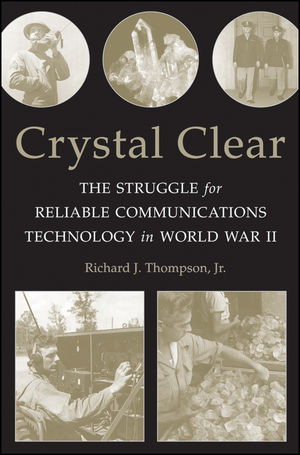

Most ebook files are in PDF format, so you can easily read them using various software such as Foxit Reader or directly on the Google Chrome browser.
Some ebook files are released by publishers in other formats such as .awz, .mobi, .epub, .fb2, etc. You may need to install specific software to read these formats on mobile/PC, such as Calibre.
Please read the tutorial at this link: https://ebookbell.com/faq
We offer FREE conversion to the popular formats you request; however, this may take some time. Therefore, right after payment, please email us, and we will try to provide the service as quickly as possible.
For some exceptional file formats or broken links (if any), please refrain from opening any disputes. Instead, email us first, and we will try to assist within a maximum of 6 hours.
EbookBell Team

5.0
30 reviewsSome of the defining leaps in technology in the twentieth century occurred during the Second World War, from radar to nuclear energy. Often left out of historical discussions are quartz crystals, which proved to be just as pivotal to the Allied victory-and to post-war development-as other technologies. Quartz crystals provided the U.S. military, for the first time, with reliable communication on the front lines, and then went on to become the core of some of the most basic devices of the post-war era, from watches, clocks, and color televisions, to cell phones and computers.
In Crystal Clear, Richard Thompson relates the story of the quartz crystal in World War II, from its early days as a curiosity for amateur radio enthusiasts, to its use by the United States Armed Forces. It follows the intrepid group of scientists and engineers from the Office of the Chief Signal Officer of the U.S. Army as they raced to create an effective quartz crystal unit. They had to find a reliable supply of radio-quality quartz; devise methods to reach, mine, and transport the quartz; find a way to manufacture quartz crystal oscillators rapidly; and then solve the puzzling "aging problem" that plagued the early units. Ultimately, the development of quartz oscillators became the second largest scientific undertaking in World War II after the Manhattan Project.
Bringing to light a little-known aspect of World War II, Crystal Clear offers a glimpse inside one of the most significant efforts in the annals of engineering.Content:
Chapter 1 From Wire to Wireless: The Development—and Acceptance—of Tactical Radio (pages 5–15):
Chapter 2 Crystal Control—The Great Gamble (pages 17–29):
Chapter 3 The Signal Corps Lays the Foundation (pages 31–54):
Chapter 4 Nothing Else to Do but Grind Crystals (pages 55–68):
Chapter 5 Riding the “Flat Wheel Limited”—Overseeing a Mass Production Industry (pages 69–91):
Chapter 6 Supplying a Mass Production Industry—The Civilian Government Steps In (pages 93–115):
Chapter 7 “The Whole Radio Crystal Program of the Armed Services Depends Upon the Success of the Procurement Program in Brazil. Nothing Must Be Allowed to Interfere with It” (pages 117–128):
Chapter 8 “God Made Lots of Small Crystals” (pages 129–144):
Chapter 9 The Aging Crisis—Stopgap Measures (pages 145–152):
Chapter 10 The Aging Crisis—Physics to the Rescue! (pages 153–161):
Chapter 11 “Without Crystals You Have Radio; With Them, Communications” (pages 163–173):